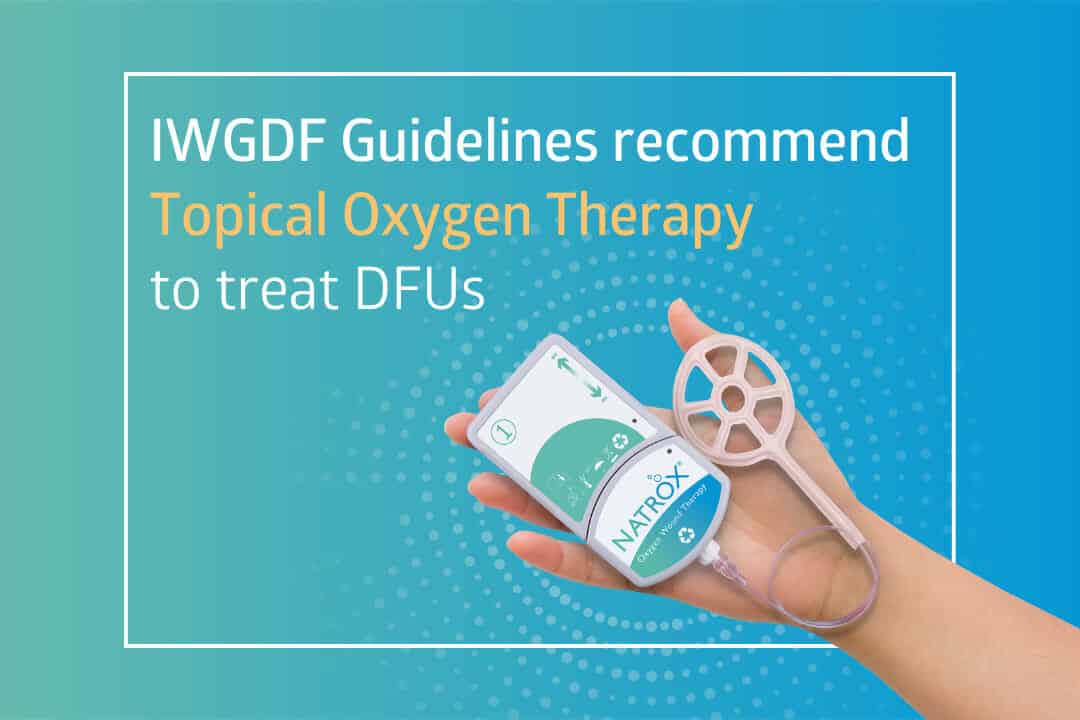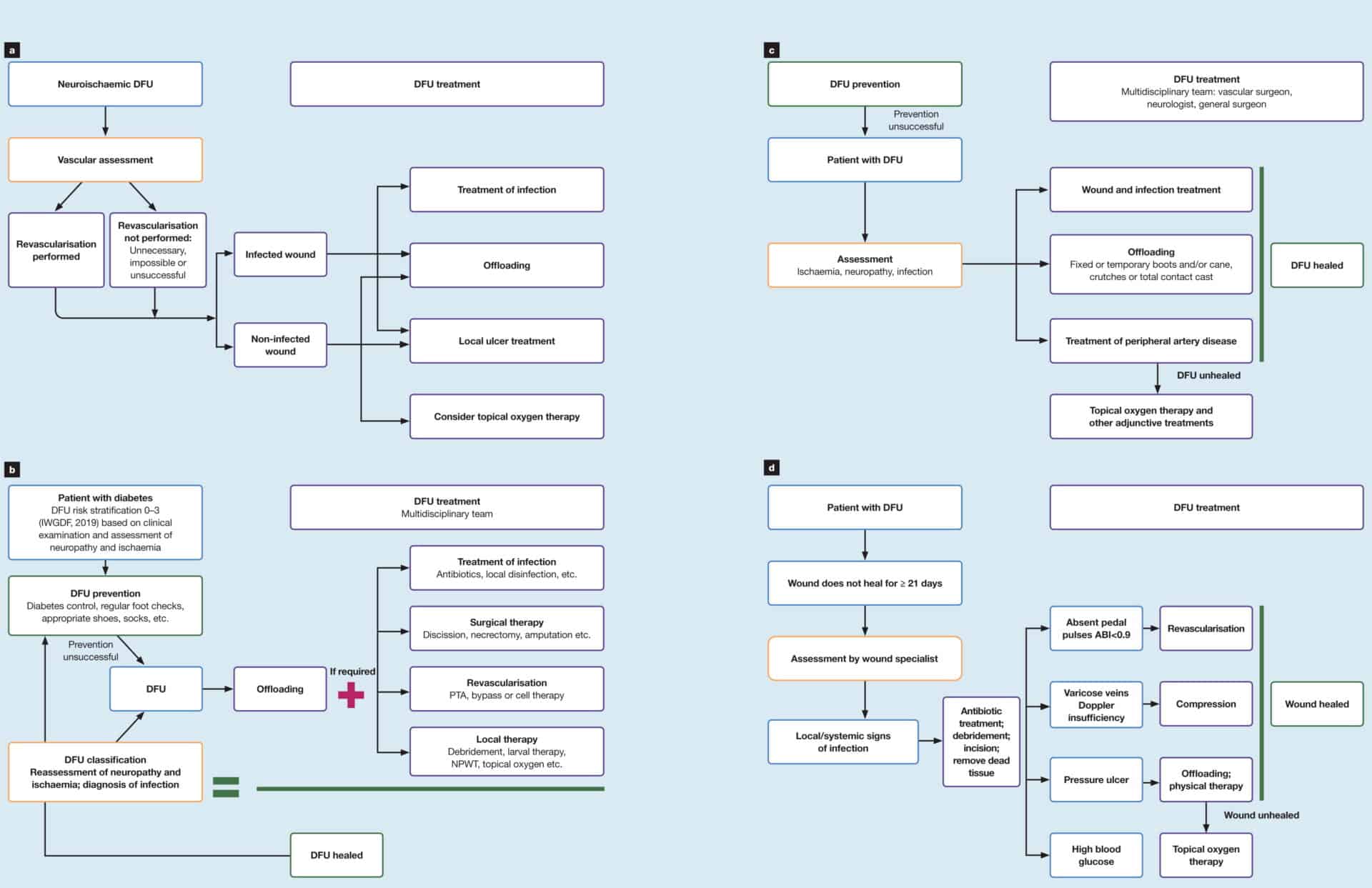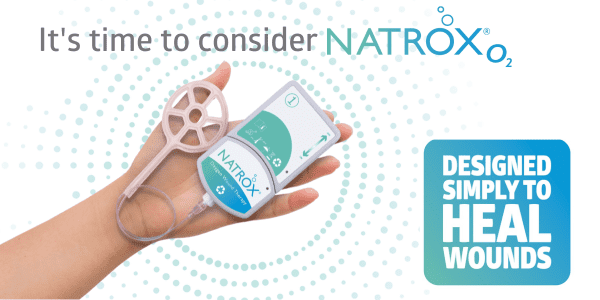
NS Healthcare is using cookies
We use them to give you the best experience. If you continue using our website, we'll assume that you are happy to receive all cookies on this website.
ContinueLearn More X
We use them to give you the best experience. If you continue using our website, we'll assume that you are happy to receive all cookies on this website.
ContinueLearn More XPress
Release
NATROX® Wound Care, a leading innovator in wound care technology including NATROX® O₂ topical oxygen therapy, proudly announces the release of newly published expert recommendations on the use of topical oxygen therapy for wound healing¹. The updated guidelines endorse topical oxygen therapy (TOT) as an adjunct therapy in the treatment of diabetic foot ulcers (DFUs)¹. With its endorsement by leading experts in the field, this ground-breaking therapy is poised to transform the lives of millions of people worldwide, offering renewed hope for effective healing and improved quality of life.
New IWDGF Guidelines
The International Working Group on the Diabetic Foot (IWGDF) has just published its 2023 “Guidelines on Interventions to Enhance Healing of Foot Ulcers in People with Diabetes¹.” This comprehensive set of recommended DFU interventions, developed by a panel of renowned experts in the field whose mission is to prevent and manage diabetic foot disease, serves as a trusted resource for healthcare professionals worldwide.

Notably, among the 29 recommendations highlighted in the new guidelines, TOT gained recognition as an accepted intervention when treating non-healing DFUs. “Consider the use of topical oxygen as an adjunct therapy to standard of care for wound healing in people with diabetes-related foot ulcers where standard of care alone has failed and resources exist to support this intervention¹.” With its inclusion in the IWGDF guidelines, topical oxygen therapy emerges as a vital tool, poised to revolutionize the management and healing of foot ulcers in individuals with diabetes.
In addition, the guidelines note that “evidence on topical oxygen has substantially expanded in the last four years with several new RCTs with a total of ten included in the systematic review for these guidelines (References 100-109)¹”, which includes an RCT study published in 2021² which compared the healing effects of using standard care against a combination of standard care plus NATROX® O₂. In the study, patients completing the 12-week therapy experienced 71% greater healing rates² and 73% greater reduction in wound size² using NATROX® O₂.

Experts recommend updating algorithms to include TOT
In a Journal of Wound Care article also published this month, experts in Central and Eastern Europe (CEE) reached a “clear consensus that adjunctive treatments with a solid evidence base, including NPWT and TOT, must be included in the algorithm”³ in each of the four proposed regional guidelines. Their goal was to establish an updated algorithm that considers the variations in clinical practice and access to treatment specific to their region. Most notably, the experts agreed that “all hard-to-heal wounds are likely to benefit from TOT.”³

Figure from Journal of Wound Care³: Country-specific algorithms proposed for the management of DFU in: Poland (a), the Czech Republic (b), Hungary (c) and Croatia (d). DFU—diabetic foot ulcer; NPWT—negative pressure wound therapy; PTA—percutaneous transluminal angioplasty
TOT received “A grade” from the American Diabetes Association
The American Diabetes Association recently released its “Standards of Care in Diabetes⁴” in which it not only recommended TOT as an adjunctive therapy for chronic DFUs, but also gave it an “A grade” based on the quality of evidence⁴. Unlike previous guidelines, the newly published recommendations acknowledge the remarkable potential of TOT⁴, which was previously not included in all three instances due to the lack of quality evidence. Extensive research conducted over the past few years has uncovered compelling evidence supporting the use of TOT as an adjunct to standard care, resulting in remarkable healing rates for DFUs.

According to Dr. Windy Cole, DPM, CWSP, FAPWH, FACCWS, a renowned authority in podiatric medicine and dedicated wound care advocate for over two decades, “The evidence supporting the efficacy of TOT is now undeniable. It is imperative that healthcare professionals worldwide embrace this innovative yet simple approach to achieve improved healing outcomes.” After witnessing the positive impact topical oxygen therapy can have on healing DFUs in her own clinic, Windy recently joined the NATROX® team as Director of Global Medical Affairs to further advocate for the integration of topical oxygen therapy in the treatment pathway for chronic wounds.

NATROX® Wound Care CEO, Craig Kennedy, expressed great enthusiasm regarding the recognition and international acceptance of topical oxygen therapy, stating, “We’re delighted that topical oxygen therapy continues to gain international recognition, cementing its status as a game-changing treatment in wound care. The inclusion of topical oxygen in the IWGDF Guidelines further validates our mission to transform the quality of life for patients suffering from chronic wounds, particularly those with diabetic foot ulcers.”
What is NATROX® O₂ Topical Oxygen Therapy
NATROX® Wound Care manufactures an award-winning⁵,⁶,⁷ topical oxygen therapy known as NATROX® O₂. The compact, wearable device generates and delivers a continuous flow of oxygen directly to the wound bed to promote accelerated healing and foster a healthy wound environment. Its non-invasive nature, coupled with its remarkable effectiveness², offers a significant advancement in chronic wound treatment, even allowing patients to be treated from the comfort of home.

Why it matters
Diabetes is on the rise, and it is predicted that one in three USA adults will be diabetic by 2050⁸, with one in four developing a DFU during their lifetime⁹. 50% of all DFUs become infected and 20% end in amputation¹⁰. Sadly, half of the patients who undergo an amputation die within five years¹¹; therefore, finding a successful treatment option is critical.
The adoption of topical oxygen therapy has the potential to transform the lives of millions of individuals worldwide, enabling them to reclaim their independence and enjoy a better quality of life. By embracing this innovative treatment, healthcare providers can improve patient outcomes, reduce the burden of chronic wounds, and alleviate the suffering experienced by countless individuals.
To learn more about NATROX® O₂ and request a demo, visit: https://www.natroxwoundcare.com/natrox-o2/